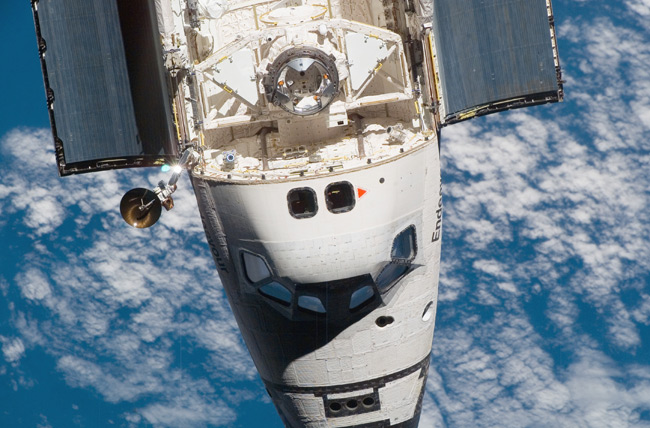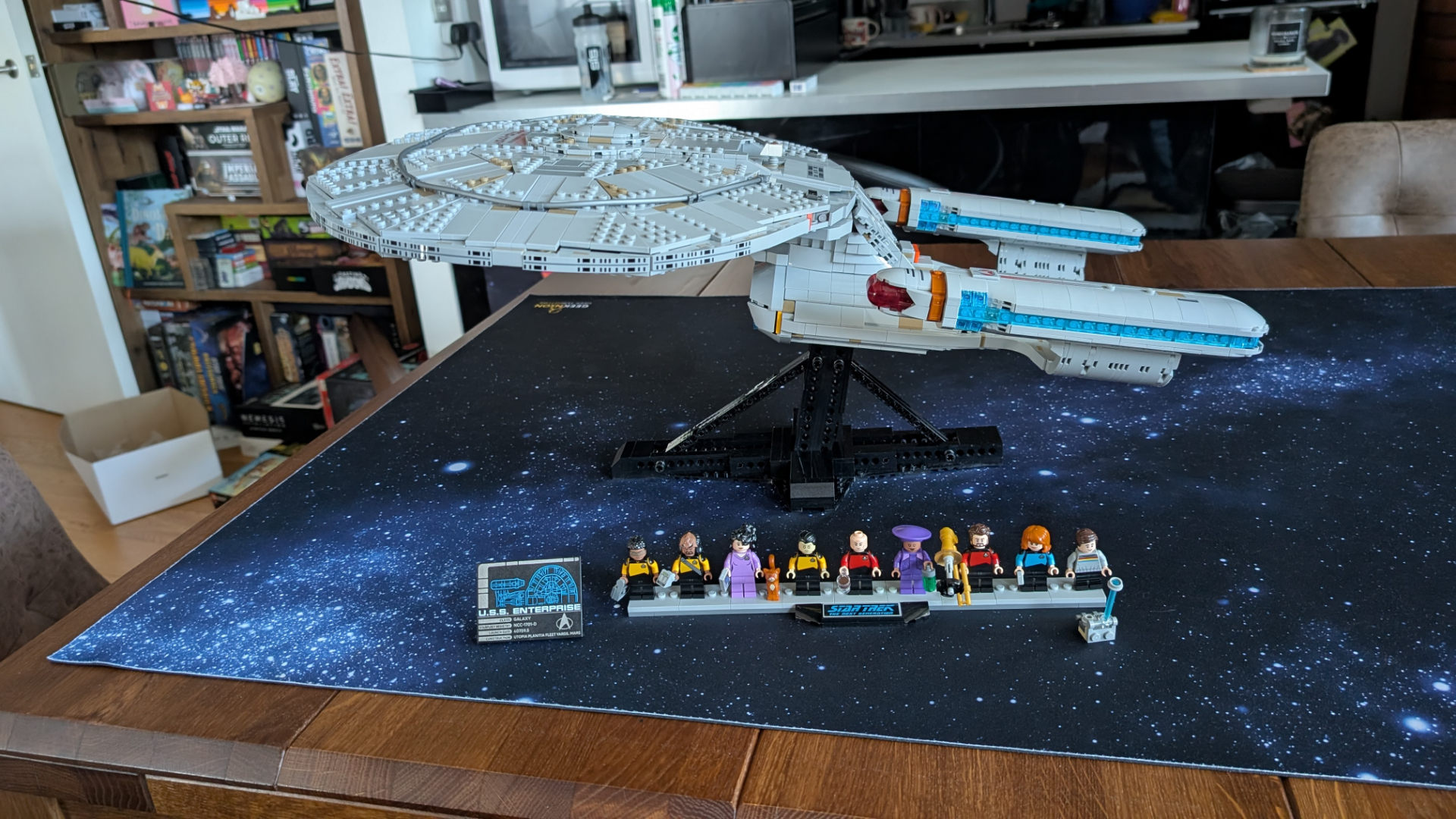Shuttle Extension Plan Won't Fly With Safety Group

CAPECANAVERAL -- Independent safety experts say it would be dangerous to fly NASAshuttles beyond 2010, and doing so could lengthen a five-year gap in thenation's ability to launch American astronauts, NASA warns.
But some argue the 6,400job cuts projectedfor Kennedy Space Center could be reduced by flying shuttles twice a yearuntil replacement rockets and spaceships are ready.
U.S. Reps. Dave Weldon andTom Feeney say it could be done by giving NASA about $2 billion more a year topay for the added shuttle flights and speed up development of spacecraft formissions to the moon and Mars.
What the Republicancongressmen propose is possible. The plan could reduce or even eliminate ananticipated five-year gap in NASA human space flight, potentially savingthousands of jobs.
But people inside andoutside NASA nonetheless raised financial, practical and safety concerns.
NASA's shuttle programalready is winding down. Production lines are shutting down. Suppliers nolonger are making critical shuttle parts. Vendors are moving on to otherbusinesses.
Consequently, shuttleoperations after the planned retirement date in 2010 might be dangerous andeven NASA says it makes no financial sense.
Breaking space news, the latest updates on rocket launches, skywatching events and more!
"We could restartthings," said John Shannon, a veteran flight director who now oversees themultibillion-dollar program. "You can do anything for a certain amount ofmoney and investment of time, but I think the nation and NASA need to decide ifthat is really in the best interest of continuing on with what we would like todo in space."
Shannon, other senioragency managers and the White House say it's not. They say the shuttle programmust be closed down so NASA can funnel money into the new moon-Mars program.
"I don't mean to soundeither cavalier about it or glib," NASA Administrator Mike Griffin said."We are bringing the shuttle program to a close in 2010. And it will havea very difficult effect on the local work force. If we don't retire in 2010,then we will not have the money to bring a new systemonline by 2015."
Weldon has other ideas. InDecember, he introduced a bill to give NASA the money to keep the shuttle fleetflying beyond 2010 and invest an extra $1 billion a year in development of newAres rockets and Orion spacecraft.
"There is a solutionto this," the Republican from Indialantic said. "It's not costprohibitive. You keep the shuttle flying to 2013. You accelerate thedevelopment of the Orion, and plan on deploying it not in 2015, but in 2013 or2014. You can effectively have a lot of mitigation by doing that."
Money, however, isn't theonly issue.
"We are activelyshutting down vendors," Shannon said.
Companies that makecritical parts such as landing-gear tires and propulsion system valves aremothballing their shuttle business or closing altogether.
Could NASA restart thoseproduction lines?
"Yes, we could,"Shannon said.
The result likely would bea small delay between NASA's last planned shuttle flight and the next newmission, Shannon said.
Feeney said time is shortto make a decision. Others say it's already too late.
"This train has leftthe station," said retired Navy Adm. Joe Dyer, the chairman of theAerospace Safety Advisory Panel, which was chartered by Congress after thedeadly 1967 Apollo 1 launch pad fire to oversee NASA space flight programs.
The shuttle fleet alreadyis obsolescent, and finding spare parts for systems critical to flight safety-- and the lives of astronauts -- is difficult. Dyer faces a similar dilemmatrying to fix one broken part on a navigation system on his sailboat.
"Now, could I go out,with great investment, and get somebody to make me one?" Dyer said."Yes, but it would be cost prohibitive. It would be slow. It wouldn't beintegrated. It's a trivial example, but it makes sense if you scale it up to alarger question like this."
The situation is so bad,some say it would be hazardous to try to keep the shuttle flying.
"To talk about areverse of strategy, a reverse of direction, over the remaining life of theshuttle would represent a serious safety challenge," Dyer said.
Nonetheless, Feeney saidthe legislation would provide NASA with enough money to fly shuttles safelywhile NASA's new craft are being developed.
"Dave's bill issubject to safety being signed off on. It's not like he and I are proposingunsafe additional missions. We would have all the same checks in place,"said Feeney, a Republican from Oviedo whose district includes the space center.
"Having said that, anytime you're flying something up into the air or into the space, as vehicles getolder, there are marginal risks that just occur. Human bodies atrophy and so domachines. So, is it riskier to fly more shuttles? Probably only on themargins."
Dyer said it's likedeciding whether to keep repairing an old car, or buy a new one. The chairmanof the independent safety group says the U.S. needs new spacecraft.
Even NASA veterans agree.
"Everybody reallyneeds to think real hard about whether that would be the right thing for thenation," said Shannon, a longtime shuttle engineer, experienced flightdirector and senior manager.
The shuttle was developedin the 1970s to be a do-all vehicle to haul up a space station, planetaryprobes, commercial satellites and military payloads.
Ten of the last 11 flightswill finish the International Space Station. The other is the lastservice call to Hubble Space Telescope.
"With the completionof the station and the completion of all of the work we would want to do withHST, my opinion is the shuttle's lifetime arc is complete," Shannon said.
The shuttle is amazing, butold and expensive to fly, Shannon said. Once the station is complete, "theshuttle has accomplished its mission, and it's time to move on."
- VIDEO: A New Era of Exploration with NASA's Orion and Ares
- IMAGES: NASA's Next Spaceship
- Top 10 Revelations of the Space Age
Published under licensefrom FLORIDA TODAY. Copyright: 2008 FLORIDA TODAY. No portion of this materialmay be reproduced in any way without the written consent of FLORIDA TODAY.
John Kelly is the director of data journalism for ABC-owned TV stations at Walt Disney Television. An investigative reporter and data journalist, John covered space exploration, NASA and aerospace as a reporter for Florida Today for 11 years, four of those on the Space Reporter beat. John earned a journalism degree from the University of Kentucky and wrote for the Shelbyville News and Associated Press before joining Florida Today's space team. In 2013, John joined the data investigation team at USA Today and became director of data journalism there in 2018 before joining Disney in 2019. John is a two-time winner of the Edward R. Murrow award in 2020 and 2021, won a Goldsmith Prize for Investigative Reporting in 2020 and was a finalist for the Pulitzer Prize in Investigative Reporting in 2017. You can follow John on Twitter.
